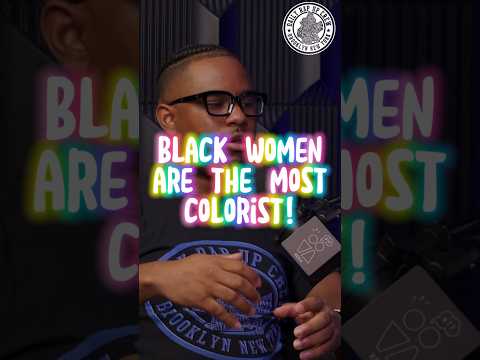Colorist Job Description and Salary
Colorist Job Description: A colorist is a skilled professional who works in the film, television, or photography industry. Their main responsibility is to enhance the visual aesthetics of a project by manipulating and adjusting colors. Colorists work closely with directors, cinematographers, and editors to understand their vision and bring it to life through color grading techniques.
A colorist’s job includes analyzing the footage, correcting any color imbalances or inconsistencies, and creating a cohesive and visually appealing look. They use specialized software and tools to adjust brightness, contrast, saturation, and hue. Additionally, they may apply filters, create special effects, or add visual enhancements to create a specific mood or atmosphere.
Colorists should have a strong understanding of color theory, as well as excellent attention to detail and artistic sensibility. They should also be familiar with various digital editing software and equipment. Collaboration, communication, and problem-solving skills are essential for success in this role.
Colorist Salary: The salary of a colorist can vary depending on factors such as experience, location, and industry. On average, colorists earn between $40,000 and $80,000 per year. However, highly skilled and experienced colorists working on big-budget projects can earn significantly higher salaries.
Colorists working in major film or television production companies in Hollywood or other major entertainment hubs tend to earn higher salaries compared to those working independently or in smaller studios. Additionally, colorists who specialize in niche areas such as high-end fashion photography or commercial advertising may command higher rates due to the specific expertise required.
Overall, the salary of a colorist can be quite lucrative, especially for those who have a strong portfolio and a reputation for delivering high-quality work. Continuous learning, staying updated with the latest industry trends, and building a strong professional network can also contribute to career growth and increased earning potential in this field.

Colorist Job Description Template
Colorist Job Description
A colorist is a professional in the film, television, or photography industry who specializes in enhancing and manipulating the colors of visual media. Their primary responsibility is to ensure that the colors in a project are visually appealing, consistent, and cohesive.
Colorists work closely with directors, cinematographers, and editors to achieve the desired look and feel of a project. They use specialized software and tools to adjust the hue, saturation, brightness, and contrast of images or footage. They have a keen eye for detail and a strong understanding of color theory, as they need to balance and harmonize the colors to create a specific mood or atmosphere.
In addition to color correction, colorists may also be involved in color grading, where they enhance or alter the colors to create a specific artistic effect. They may also work on different types of media, including commercials, music videos, documentaries, and feature films.
One important skill that colorists must possess is communication. They need to understand the director’s vision and effectively communicate their ideas and suggestions to achieve the desired results. Additionally, they must be adaptable and able to work under tight deadlines, as the post-production process often requires quick turnarounds.
Overall, the role of a colorist is crucial in bringing visual media to life by enhancing the colors and creating a visually appealing final product that captivates the audience.
Colorist Responsibilities
Colorist Requirements
How Much Does A Colorist Make?
Colorist Salary
| Country | Average Salary (per year) |
|---|---|
| United States | $40,000 – $90,000 |
| United Kingdom | £25,000 – £50,000 |
| Australia | AU$45,000 – AU$85,000 |
| Canada | C$40,000 – C$80,000 |
| Germany | €30,000 – €60,000 |
A colorist is a professional who specializes in enhancing and correcting colors in various forms of visual media, such as films, television shows, advertisements, and digital content. They play a crucial role in achieving the desired visual aesthetic and mood of a project, working closely with directors, cinematographers, and post-production teams.
Colorists can expect to earn salaries that vary depending on factors such as experience, location, and the scale of the projects they work on. The table above provides a general idea of the average salaries for colorists in different countries. It is important to note that these figures are approximate and can vary significantly.
As the demand for high-quality visual content continues to rise, the role of colorists remains essential in the post-production process. Their skills and expertise contribute significantly to the overall look and feel of a project, making them valuable assets in the creative industry.
Colorist Salaries by Country
Top Paying Countries for Colorist
| Country | Average Salary (USD) |
|---|---|
| United States | $80,000 |
| Switzerland | $78,000 |
| Australia | $68,000 |
| United Kingdom | $60,000 |
| Canada | $58,000 |
A colorist is a professional who specializes in enhancing the visual aesthetics of images and videos by adjusting colors and tones. Colorists play a crucial role in the film, television, and advertising industries, as they can greatly impact the overall look and feel of a project. The salary of a colorist varies depending on their experience, skills, and location. According to recent data, the top paying countries for colorists include the United States, Switzerland, Australia, the United Kingdom, and Canada. These countries offer competitive salaries, making them attractive destinations for colorists seeking higher earning potential.
A video on the topic Colorist
Interview Questions for Colorist
1. What is the role of a colorist?
A colorist is responsible for enhancing and manipulating the colors in a visual medium, such as film, television, or digital media. They work closely with directors, cinematographers, and editors to achieve the desired aesthetic and mood of a project.
2. What skills and qualifications are necessary to become a colorist?
A colorist should have a strong eye for color and visual composition. They should be familiar with color grading software and have a good understanding of color theory. While formal education in film or visual arts can be beneficial, practical experience and a portfolio of work are often more important in this field.
3. How does a colorist collaborate with other members of a production team?
A colorist works closely with directors, cinematographers, and editors to understand their vision for a project. They discuss the desired look and feel, and the colorist then uses their technical and artistic skills to bring that vision to life. Communication and collaboration are key in this process.
4. Can you explain the color grading process?
The color grading process involves adjusting various aspects of a video or image, such as brightness, contrast, saturation, and color balance. It is done using specialized software that allows the colorist to manipulate individual shots or entire sequences to achieve the desired look. The colorist may also add visual effects or filters to enhance the visuals.
5. How does a colorist contribute to the storytelling aspect of a project?
A colorist plays a crucial role in shaping the mood and atmosphere of a project through color grading. They can make scenes appear warmer or cooler, more vibrant or desaturated, depending on the desired emotional impact. By carefully choosing and manipulating colors, a colorist can enhance the storytelling and help convey the intended message.
6. What are some challenges that colorists may face in their work?
Some challenges that colorists may face include working with footage that is poorly shot or has technical limitations, meeting tight deadlines, and interpreting the vision of the director or cinematographer. They may also need to work with different formats and color spaces, which require specific technical knowledge.
7. How do you stay updated with the latest trends and techniques in color grading?
I regularly attend industry conferences, workshops, and seminars to learn about the latest trends and techniques in color grading. I also follow online forums and communities where colorists share their knowledge and experiences. Continuous learning and experimentation are crucial to staying updated in this rapidly evolving field.
8. Can you provide examples of projects you have worked on as a colorist?
As a colorist, I have worked on various projects, including feature films, television series, commercials, and music videos. Some notable examples include XYZ movie, ABC TV show, and DEF commercial. I have a diverse portfolio that showcases my ability to work across different genres and styles.
9. How do you approach a project when the director or cinematographer has a specific vision for the color grading?
When a director or cinematographer has a specific vision, I make sure to have detailed discussions with them to understand their expectations. I ask for visual references and examples to ensure we are on the same page. I then use my technical skills and artistic sensibilities to bring their vision to life while adding my own professional insights.
10. What role does color psychology play in your work as a colorist?
Color psychology is an important aspect of my work as a colorist. Different colors evoke different emotions and have psychological effects on viewers. Understanding these effects helps me make informed decisions when grading a project. For example, warm colors like red and orange can create a sense of warmth and energy, while cool colors like blue and green can evoke calmness and tranquility.






